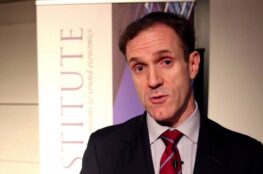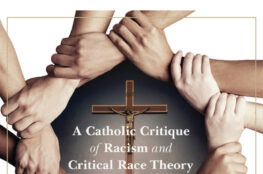With the exception of December 22’s “The Myth of Hart,” Opus Publicum has gone a bit soft editorially. It’s been a “whimsical week,” I suppose. That will change starting tomorrow. In the interest of doing some tidying up, I scanned through “Drafts” folder, along with jottings I put in the notebook in my side bag, to see if there was anything worth holding over into 2015. There really isn’t. Most good ideas will circle around again, and certain topics have moved past their shelf life; it’s time to let them go into the digital (or literal) dustbin. There are other matters which, if I had the time, I would have dedicated more energy toward. For instance, the ongoing struggle in eastern Ukraine and its implications for the future of both the Ukrainian Greek Catholic and Orthodox churches in that region remains a topic of sizable interest to me, though not one I feel equipped to write about without enflaming passions. A few “meta” matters, like the future of traditional Catholicism and the spread of the Tridentine Mass, fell off my radar this past year despite the high degree of attention I had paid to them in the past. It’s not that I no longer care about them; it’s just that at some point the law of comparative advantage finally has its say. There are other web-logs and online sites with the resources to invest in those issues. There are painfully few which focus on Opus Publicum’s usual menu of topics: Catholic Social Teaching/Thought (CST); the Kingship of Christ; economics and Catholicism; professional wrestling (well not so much these days); and so on, and so forth.
Speaking of CST, Elliot Milco, an editor/contributor at The Josias and the author of his own excellent web-log, Ursus Elisei, recently expressed dissatisfaction with the term “Catholic Social Teaching.” His point, if I understand it properly, is that CST appears to stand apart from the Gospel as its own independent deposit of opinion on this-or-that social topic. CST, then, is another vehicle for making the Church seem relevant to the secular world shot through with liberal ideology. Milco has a point—one which I need to still spend more time chewing on. In my (tepid) defense, I will say that I use the expression CST because it already has wide circulation; the expression “social magisterium” works, too, and it probably better reflects the true nature of the Church and her interest in the right ordering of society. As I have argued in several places, including two articles for The Angelus magazine, “Illiberal Catholicism and Social Order” and “Restoring the Integrity of Catholic Social Teaching,” CST must not be allowed to remain in the hands of liberals, whether they are oriented by free-marketing ideology or socialist eschatology. Moreover, the Church’s social tradition runs further than back than Pope Francis’s Evangelii Gaudium; many Catholics would do well to spend some time next to the fire (or space heater) this winter with a copy of Blessed Pius IX’s Quanta Cura.
One of the freshly purged draft posts that I never completed this year concerned the “Orthodox in Communion with Rome” (OICWR) phenomenon. In October, John Beeler wrote a post entitled “Inside the OICWR: Abusing Unlatinized Greek Catholics as Human Shields.” Clearly he was not trying to avoid provocation. For a fleeting moment or two, I thought there might be more to say on the matter until I realized that it wasn’t a hornet’s nest I was interested in kicking. Don’t get me wrong. I find the OICWR phenomenon to be barely defensible, though I understand that different Catholics use the expression in different ways. At its worst, OICWR represents a “Do It Yourself” ecclesiology where doctrines are retained (or discarded) based largely on personal preference. While I do not know the exact size of the OICWR crowd, my sense is that it is quite small and that its membership is comprised mostly of ex-Roman Rite dissidents and a handful of Protestant converts. They pop up on various message boards now-and-again to spread their propaganda and, amusingly enough, the actual Orthodox seem to have very little patience for them. Go figure.
Another deleted draft dealt more in depth with what Patrick Deneen has called “radical Catholicism.” I ceased working on the post because my thinking on this topic has started to shift steadily over the past several months. While I was originally inclined to view what John Zmirak labeled as “illiberal Catholicism” as a unified whole comprised of several distinguishable parts, my refreshed sense is that “radical Catholicism,” to the extent it takes some of its bearings from the academic Left, is a different creature than the “illiberal Catholicism” which roots itself in the Church’s social magisterium, including all of those dusty 18th and 19th Century papal documents that nobody reads anymore. The “radical Catholic” movement, as Deneen rightly observed, comes largely in reaction against the neoliberal/neoconservative capture of Catholic social thought which occurred in the 90s and 00s. On the one hand that seems to be a very good thing; the economic liberals never had any business anointing themselves as the authoritative interpreters of CST. On the other, it is not clear that “radical Catholicism” is as grounded magisterially as it ought to be. More recently I have taken to referring to a significant, perhaps substantial, subset of “radical Catholicism” as “socialist Catholicism.” Although the label is a bit imprecise, it refers, generally speaking, to Catholics who reject the sort of economic liberalism associated with, say, libertarians like Tom Woods or the agenda of the Acton Institute while holding to a broadly favorable view of the administrative state, centralized regulation, and direct economic redistribution (largely through the taxing mechanism). This is loose sketch mind you—one which undoubtedly requires some touching up. That project will have to wait for 2015 to roll around, however.
The final discarded draft I will mention concerned the Tridentine Mass and the unending, even nauseating, controversy over the so-called “1962 books” and the arguable superiority of the Roman Rite as it stood in 1954 (or 1939—take your pick). This is an issue which I do plan to revisit in 2015 as part of my perilous plan to exclusively use the 1945 Breviarium Romanum in conjunction with the St. Lawrence Press’s Ordo Recitandi (based on the 1939 Roman Rite with provisions for feasts added to the Roman Calendar up through the mid-1950s). The point I originally intended to raise, albeit without much forethought, is whether relying on the pre-1962 Roman Rite in any way constituted a serious breach with the spirit of Summorum Pontificum (SP). Clearly, to the extent that SP identifies the 1962 books as the normative texts for the “Extraordinary Form,” relying on any pre-1962 liturgical text would appear to violate SP. However, as many traditional Catholics well know, local usage and custom, found across various Ecclesia Dei groups and dioceses, includes pre-1962 elements—and no one seems to care. Additionally, given that the most significant “deviation” of, say, the 1954 or 1939 Roman Rite from its 1962 form is that the content of the former office is fuller than the latter, it is arguable that a priest or religious who prays the 1954 or 39 offices isn’t “missing anything.” In fact, all he is doing is remaining in prayer longer, which strikes me as a very laudable thing indeed.
That’s it for now. Let me just close by wishing all of you a blessed Feast of the Circumcision of our Lord and the Octave of His Nativity.



